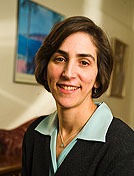Judith Hellerstein, Economics
| When |
Nov 27, 2017
from 12:00 PM to 01:00 PM |
|---|---|
| Where | 1101 Morrill Hall |
| Contact Name | Jennifer Doiron |
| Contact Phone | 301-405-6403 |
| Add event to calendar |
|
About the Presentation
Dr. Hellerstein will explore the links between social capital and labor market networks at the neighborhood level. Dr. Hellerstein and her fellow researchers harness rich data taken from multiple sources, including matched employer-employee data with which they measure the strength of labor market networks, data on behavior such as voting patterns that have previously been tied to social capital, and new data – not previously used in the study of social capital – on the number and location of non-profits at the neighborhood level. They use a machine learning algorithm to identify potential social capital measures that best predict neighborhood-level variation in labor market networks. They find evidence suggesting that smaller and less centralized schools, and schools with fewer poor students, foster social capital that builds labor market networks, as does a larger Republican vote share. The presence of establishments in a number of non-profit oriented industries are identified as predictive of strong labor market networks, likely because they either provide public goods or facilitate social contacts. These industries include, for example, churches and other religious institutions, schools, country clubs, and amateur or recreational sports teams or clubs.
About the Speaker

Professor Hellerstein received her PhD from Harvard University in 1994 and joined the Maryland faculty in 1996. She is also a Research Associate of the National Bureau of Economic Research. The focus of much of her research is labor market outcomes across gender, race, and ethnicity.
Publications include:
"Do Labor Markets Have an Important Spatial Dimension?", Journal of Urban Economics, 2014;
"Business Cycles and Divorce: Evidence from Microdata", Economics Letters, 2013;
"Neighbors and Co-Workers: The Importance of Residential Labor Market Networks," Journal of Labor Economics, 2011;
"Dads and Daughters: The Changing Impact of Fathers on Women's Occupational Choices," Journal of Human Resources, 2011
